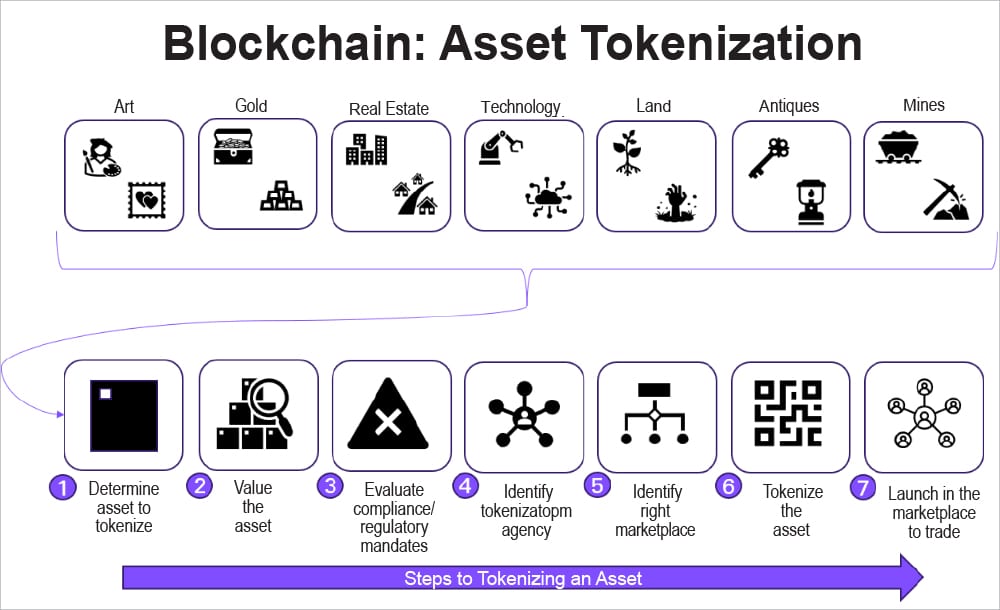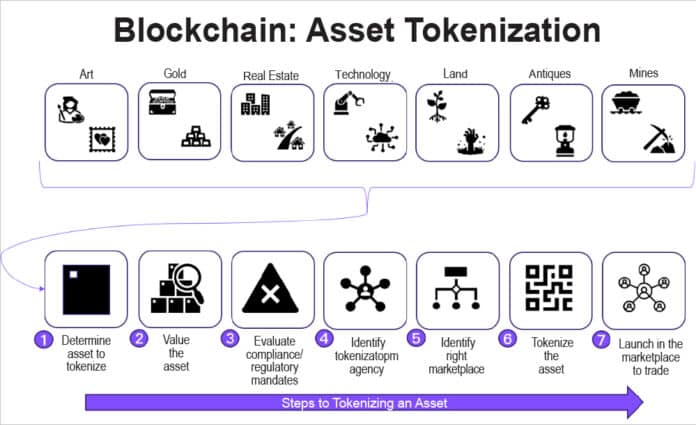Blockchain technology has enabled the representation of physical assets as digital tokens, but generative AI is the key to unlocking the full potential of asset tokenization. There are many open source tools, too, that can help to increase the adoption of tokenization.
Blockchain technology has revolutionised the way we think about ownership and transfer of assets. Asset tokenization, the process of representing physical assets as digital tokens on a blockchain, has opened new investment opportunities and streamlined existing ones. However, the true potential of asset tokenization lies in its combination with generative AI.
By combining the security and transparency of blockchain with the power of generative AI, organisations can create a more efficient and secure financial ecosystem. As the technology continues to evolve, we can expect to see increased adoption and innovation in the field of asset tokenization, paving the way for a new era of digital assets and investments.
From physical assets to digital tokens
Traditionally, ownership of assets like real estate, artwork, or even intellectual property has been represented by physical certificates or contracts. However, this system can be cumbersome, illiquid, and prone to inefficiencies. Asset tokenization disrupts this paradigm by creating digital representations of these assets on a blockchain. These tokens act as tradable units, enabling fractional ownership, increased transparency, and potentially faster transactions.

Steps to tokenize an asset
Determine the asset to tokenize: The first step involves identifying the asset you wish to tokenize. Real estate, commodities, intellectual property, and even company shares are all potential candidates. Consider factors like divisibility (can the asset be easily divided into smaller ownership units?), marketability (will there be sufficient investor interest?), and regulatory landscape (are there any restrictions on tokenizing this type of asset?).
Value the asset: Accurately determining the asset’s value is crucial. Engage a qualified appraiser or valuation expert to ensure fair representation and investor confidence.
Evaluate compliance/regulatory mandates: The regulatory landscape surrounding asset tokenization is evolving rapidly. Conduct thorough research to understand the legal and regulatory requirements applicable to your specific asset and targeted audience. Consulting with legal and financial professionals specialising in blockchain is highly recommended.
Identify a tokenization agency: Partner with a reputable tokenization agency with expertise in blockchain technology, security protocols, and regulatory compliance. They will guide you through the technical aspects of token creation, smart contract development, and platform integration.
Identify the right marketplace: Choosing the appropriate marketplace for trading your tokens is vital. Consider factors like the platform’s reputation, liquidity, investor base, and regulatory compliance with your target market. Popular options include security token exchanges (STOs) or decentralised exchanges (DEXs).
Tokenize the asset: The tokenization agency will develop the smart contracts, which are self-executing code on the blockchain that governs the ownership, transfer, and other functionalities of the tokenized asset. This ensures secure and transparent transactions.
Launch in the marketplace to trade: Once the tokens are created and integrated with the chosen marketplace, you can launch your offering to investors. This may involve marketing campaigns and investor onboarding processes.
Unlocking new possibilities
By following these steps, organisations can successfully tokenize assets and unlock new avenues for investment and ownership. Asset tokenization offers some exciting benefits.
- Increased liquidity: Fractional ownership allows easier entry and exit for investors, potentially increasing asset liquidity.
- Enhanced transparency: Blockchain technology provides a secure and transparent record of ownership and transaction history.
- Reduced costs: Tokenization can streamline administrative processes and potentially reduce transaction costs.
- Global reach: Digital tokens can attract a wider pool of international investors.
Open source tools for asset tokenization
Here are some popular open source tools that are being leveraged for asset tokenization.
- Fraud detection and prevention: Generative AI algorithms can analyse vast amounts of data to identify patterns and anomalies, ensuring the authenticity and integrity of tokenized assets. AI libraries like TensorFlow or PyTorch can be used to analyse data and identify patterns, ensuring token authenticity.
- Smart contract optimisation: Generative AI can generate and optimise smart contracts, automating the creation and management of tokenized assets, reducing costs and increasing efficiency. Frameworks like OpenZeppelin or Chainlink can be used to generate and optimise smart contracts, automating asset management.
- Personalised investment opportunities: Generative AI can analyse investor preferences and create tailored investment portfolios, expanding the reach of asset tokenization to a broader audience. Machine learning libraries like scikit-learn or XGBoost can be used to analyse investor preferences and generate tailored portfolios.
- Decentralised marketplaces: Generative AI can power decentralised marketplaces, enabling secure, transparent, and efficient trading of tokenized assets. We can build on top of frameworks like Ethereum or Polkadot to create secure, transparent, and efficient trading platforms.
- Digital twinning: Generative AI can create virtual replicas of physical assets, enabling real-time monitoring and analysis, and unlocking new use cases for tokenized assets. IoT frameworks like AWS IoT or Google Cloud IoT Core can be used to create virtual replicas of physical assets, enabling real-time monitoring.
- Data-driven decision making: Generative AI can provide actionable insights and predictions, enabling informed investment decisions and risk management. Data analytics tools like Apache Spark or Apache Flink can be leveraged for this.
- Automated compliance: Generative AI can ensure regulatory compliance, reducing the legal and financial risks associated with asset tokenization. APIs like Lexalytics or Ayasdi can be integrated to ensure regulatory adherence.
By combining blockchain and generative AI, developers can create a more efficient, secure, and personalised asset tokenization ecosystem. Leveraging open source technologies accelerates development and ensures interoperability. The tools mentioned above can help unlock the full potential of asset tokenization and create innovative solutions for the future of finance.
Asset tokenization represents a transformative shift in the financial landscape. By understanding the process and its potential benefits, organisations can participate in this exciting evolution. Remember, thorough research, due diligence, and collaboration with qualified professionals are essential for a successful tokenization journey.












































































